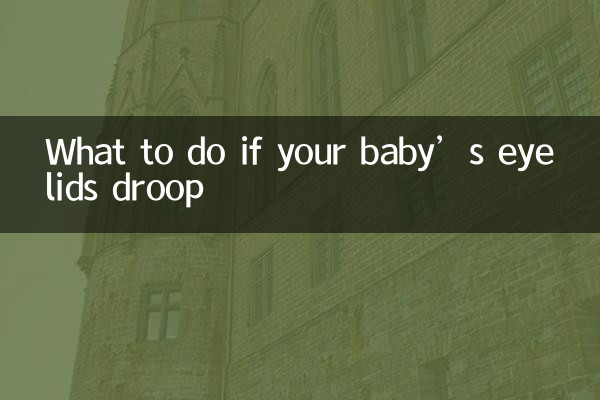What to do if your baby's eyelids droop? ——Comprehensive analysis and response guide
Recently, topics about the health of infants and young children have continued to heat up on major social platforms, among which "baby eyelid drooping" has become the focus of many new parents. Drooping eyelids (ptosis) not only affect appearance but may also pose potential risks to vision development. This article will provide you with structured data analysis and practical solutions based on the hot discussions on the Internet in the past 10 days.
1. Top 5 popular parenting and health topics in the past 10 days

| Ranking | Topic keywords | Number of discussions (10,000) | main focus |
|---|---|---|---|
| 1 | Allergies in infants and young children | 28.6 | Food allergy recognition and response |
| 2 | sleep regression | 22.3 | Changes in sleep patterns at 4 months of age |
| 3 | Droopy eyelids | 18.9 | Congenital treatment timing |
| 4 | vaccination reaction | 15.2 | MMR vaccine care |
| 5 | language delay | 12.7 | 18-month-old language assessment standards |
2. Comparison of types and characteristics of eyelid ptosis
| Classification | incidence | Typical performance | golden intervention time |
|---|---|---|---|
| congenital | About 1/800 | Appears at birth, often unilaterally | 3-5 years old (severe need to be earlier) |
| Acquisition | Rare | Caused by trauma/neuropathy | Treat immediately after diagnosis |
| pseudoptosis | common | Caused by loose eyelid skin | Mainly observation |
3. Three-step method for parent self-examination
1.observation test: When the baby opens his eyes naturally, be careful if the eyelid margin covers the cornea by more than 2mm.
2.dynamic check: Record the difference in performance in different time periods (morning/after nap)
3.accompanying symptoms: Is it accompanied by abnormal eye movement and unequal pupil size?
4. Suggestions on graded diagnosis and treatment
| degree | coverage ratio | Solutions |
|---|---|---|
| Mild | <1/3 pupil | Regular eye follow-up visits |
| Moderate | 1/3-1/2 pupils | Consider levator muscle training |
| Severe | >1/2 pupil | Surgical evaluation (can be performed as young as 1 year old) |
5. Latest Treatment Technology Progress
1.minimally invasive sling: Using adjustable suture technology, small trauma and quick recovery
2.frontalis muscle flap transfer: Suitable for severe cases, with a success rate of over 90%
3.3D simulation system: Accurately predict postoperative effects before surgery
6. Daily care points
• Avoid forcing the eyelids open to prevent corneal damage
• Assist in closing your eyes every 2 hours to prevent dry eye syndrome
• Choose a wide-brimmed hat for sun protection to reduce compensatory squinting movements
Kind tips:If your baby is found to have compensatory behaviors such as looking up and raising his eyebrows frequently, it indicates that vision development may have been affected, and it is recommended to see a pediatric ophthalmologist as soon as possible. Most cases can achieve a good prognosis through timely intervention, and parents do not need to be overly anxious.

check the details

check the details